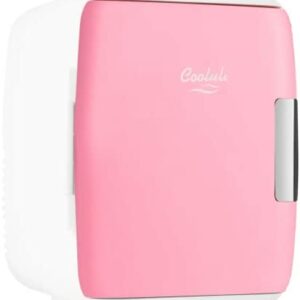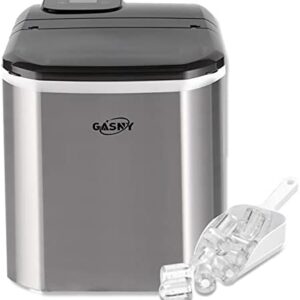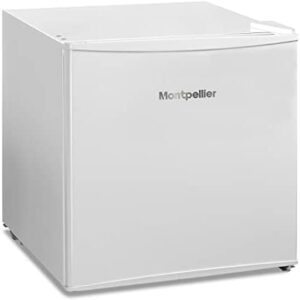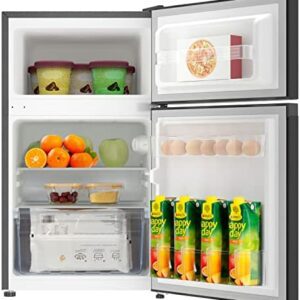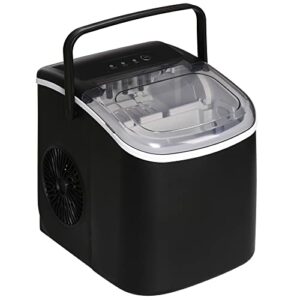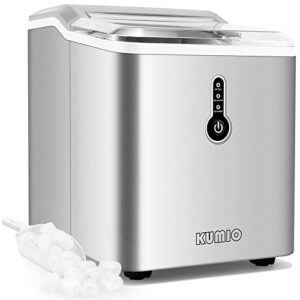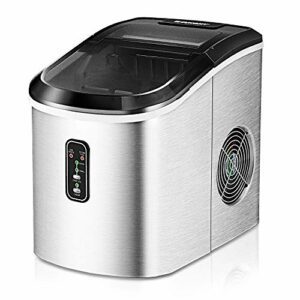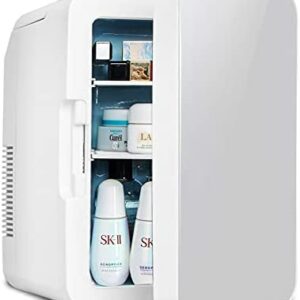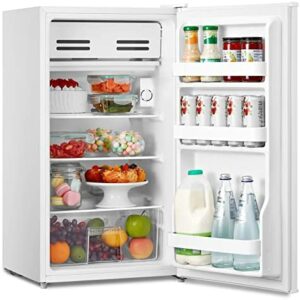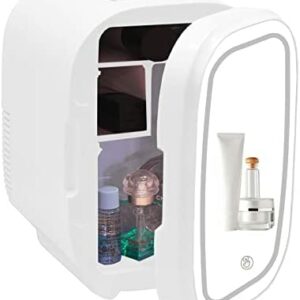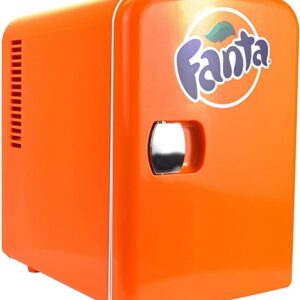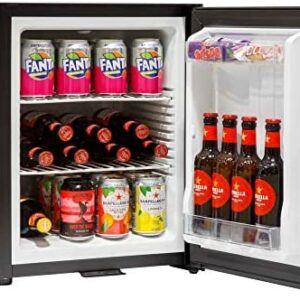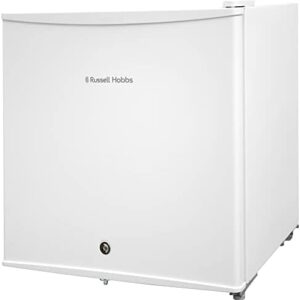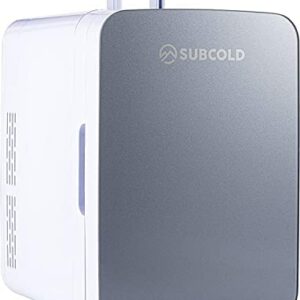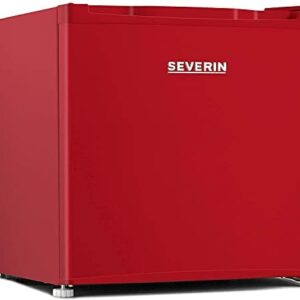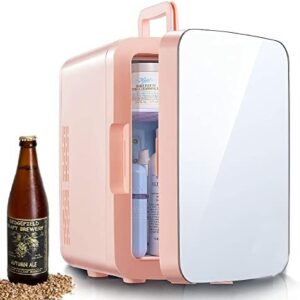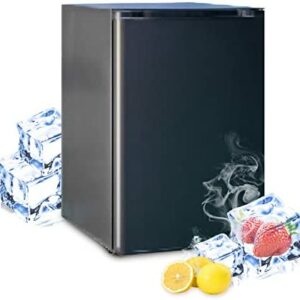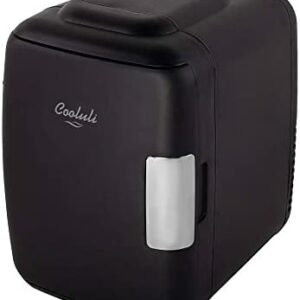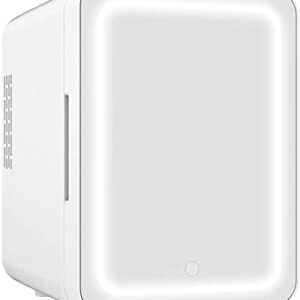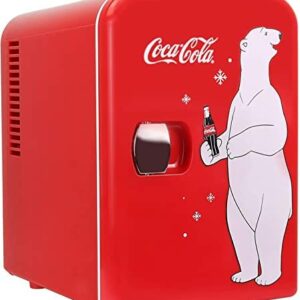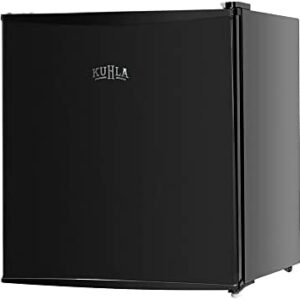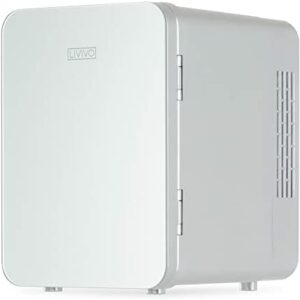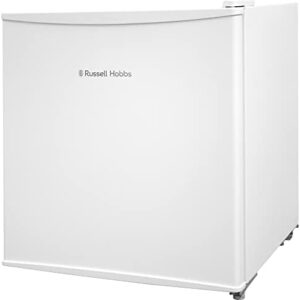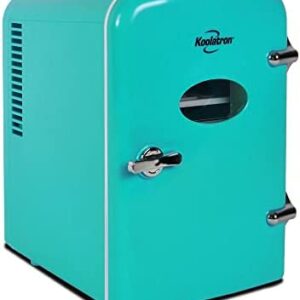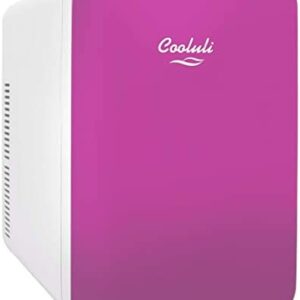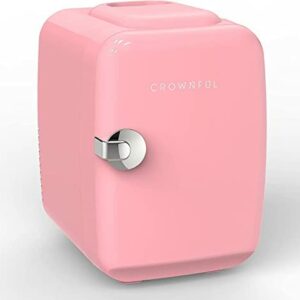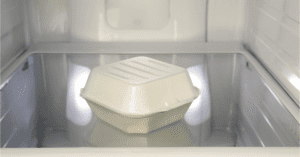Office Fridges
An office fridge isn’t just about keeping drinks cool; it can be a valuable perk that boosts employee morale and helps maintain a productive work environment. This guide equips you with the knowledge to select the perfect fridge for your office needs.

About Wine Fridge Hub
We at Wine Fridge Hub are passionate about helping you find the best appliances for your needs. While our speciality is wine fridges, we understand the importance of well-equipped workplaces. Our team has years of experience researching and reviewing appliances, and we leverage expert insights to provide you with trustworthy information.
Understanding Your Office Fridge Needs
Before diving into specific features, consider these key factors to determine the ideal office fridge:
- Number of Employees: The number of employees using the fridge will significantly impact size requirements. A small office with a handful of people might do well with a mini fridge, while a larger office with dozens of employees would likely need a full-size fridge.
- Space Constraints: Measure the available space for the fridge and consider both its height and width. Remember, you’ll also need clearance for the fridge door to open comfortably.
- Food and Drink Storage: Will the fridge primarily store lunches and snacks, or will it also need to accommodate drinks? Knowing the typical food and beverage items employees bring will help determine capacity needs.
Types of Office Fridges
There are two main types of office fridges to consider:
- Mini Fridges (1.7 – 4.5 cubic feet): Ideal for small offices, break rooms with limited space, or personal use in cubicles. They’re typically more energy-efficient but may not offer features like ice dispensers or freezers.

- Full-Size Fridges (Variable Size): Perfect for larger offices with many employees. They offer more storage space and potentially additional features like ice and water dispensers. However, they require more space and might use more energy.
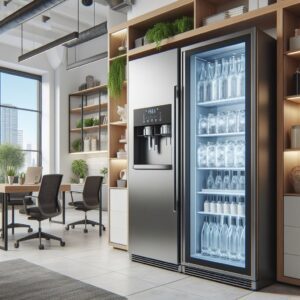
Important Features to Consider
- Size and Capacity: Choose a fridge with enough space to comfortably store food and drinks for the number of employees using it. Consider the typical lunch size and how often the fridge will be restocked.
- Energy Efficiency: Look for an Energy Star certified fridge to save money on electricity bills in the long run.
- Noise Level: Some fridges can be noisy, which can be disruptive in an office setting. Check reviews and noise level specifications before purchasing.
- Features: Consider additional features like can dispensers, ice makers, freezers, or adjustable shelves based on your office’s needs and budget.
- Cost: Office fridges range in price from around £50 for a mini fridge to several hundred pounds for a full-size fridge with advanced features.
Shop by Type
Editor's Picks: Best Office Fridges
We've selected these fridges for their size, features, and value. Find the perfect one for your needs!
Displayed by Best Ratings. See how we rate fridges: link here
Showing 1–30 of 201 results
-
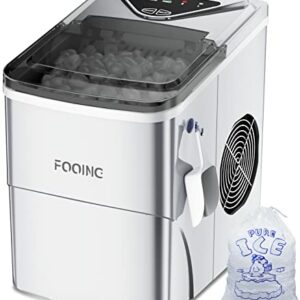
FOOING Ice Maker Machine Countertop, 9 Cubes in 6 Mins, 28lbs...
-

Cooluli CMF6P Compact Refrigerator in Pink – Portable and...
-

QMMD Ice Makers Countertop
-

Montpellier MTTR43W Table Top Mini Fridge in White 43L Capacity...
-

CHiQ 86L Under Counter Fridge Freezer
-

HOMCOM Ice Maker Machine Counter Top
-

KUMIO Ice Makers Machine Countertop – Portable Ice Maker...
-

6 Litre Mini Fridge – Subcold Pro6 – Chequer White
-

Euhomy Ice Maker Machine Countertop – Silver
-

Eklipt 10L Mini Fridge
-

COMFEE’ 93 Litre Fridge RCD93WH1(E) – Under Counter...
-

VNIMTI Mini Skincare Fridge 8L
-

Coca-Cola Fanta 4L Mini Fridge
-

Portable Ice Cube Maker – FOHERE Ice Makers Machine Countertop
-

Russell Hobbs RHTTLF1-LCK Lockable 43 Litre Table Top Mini Fridge...
-

Subcold Ultra 10 Mini Fridge – 10L – Grey
-

Severin KB 8876 Mini Fridge Freestanding 46 L Red
-

Mini Fridge for Bedrooms 10L/11 Cans with Mirror, Cooler &...
-

Techomey 12V Fridge for Campervan
-

Cooluli Skincare Mini Fridge Black
-

VNIMTI Mini Skin Care Fridge with LED Mirror – 4L
-

Coca-Cola 4L Mini Fridge – Portable Cooler and Warmer for...
-

Kuhla 43L Mini Fridge with Ice Box
-

LIVIVO 4L Mini Fridge Cooler with Glass Panel Door
-

Russell Hobbs RHTTLF1 43L Table Top F Energy Rating Fridge White...
-

Koolatron Coca-Cola Fanta 4L Portable Cooler/Warmer – Orange
-

Koolatron Retro Mini Fridge – 4L – Aqua
-

Cooluli 15L Mini Fridge for Bedroom – Pink
-

CROWNFUL Mini Fridge, 4 Litre 6 Can Portable Cooler and Warmer...
Important Considerations
- Regulations and Hygiene: It’s crucial to maintain a clean and hygienic environment for storing food in an office fridge. Briefly discuss common best practices like labelling containers, maintaining proper temperatures (check local regulations), and regular cleaning.
- Noise Level: A quiet office fridge is essential for a peaceful work environment. Look for models with decibel ratings below 40 dB for near-silent operation.
- Cost Considerations: Consider long-term costs beyond the initial purchase price. Energy-efficient models might have a higher upfront cost but save money on electricity bills over time. Factor in potential maintenance needs as well.
Maximising Shelf Life and Food Safety in Office Fridges
While mini fridges offer convenience, it’s important to understand how they might impact food safety. Due to potential temperature fluctuations, mini fridges might not be suitable for storing raw meat or highly perishable items.
Tips for maximising shelf life and food safety in office fridges
- Label all food items: Include the owner’s name and date stored.
- Maintain proper temperatures: Most office fridges should ideally maintain a temperature between 3°C and 5°C.
- Store cooked foods above raw foods: This helps prevent cross-contamination.
- Practice good hygiene: Encourage employees to wash their hands before using the fridge and clean up any spills promptly.
Energy-Efficient Options
Office fridges are a convenient addition, but they can also add to your electricity bill. Here at Wine Fridge Hub, we understand the importance of eco-friendly choices. That’s why this section focuses on selecting energy-efficient office fridges to keep your running costs low and minimise your environmental impact.
Understanding Energy Efficiency Ratings
Look for the Energy Label when choosing a office fridge. This label, displayed prominently on most appliances in the UK, provides valuable information about energy consumption. Here’s a breakdown of the rating system:
- A+++ (most efficient): These fridges use the least amount of energy, resulting in lower running costs and a reduced environmental footprint.
- A++, A+, A: These fridges are also considered highly energy-efficient.
- B, C, D: These ratings indicate less energy efficiency, which can translate to higher electricity bills.
- E, F, G (least efficient): While these fridges might be cheaper upfront, their higher energy consumption can cost you more in the long run.
Remember: A slightly higher initial investment in an A-rated fridge can lead to significant savings on your electricity bill over the lifespan of the appliance. Consider referencing resources like Energy Star https://www.energystar.gov/ to understand efficiency ratings in more detail.
Choosing Energy-Efficient Features
Beyond the overall energy rating, some features can further enhance the energy efficiency of your office fridge:
- Auto Shut-Off: Look for a fridge with an auto shut-off feature that automatically turns off the cooling system when the door is left open. This simple feature can prevent wasted energy.
- LED Lighting: Traditional incandescent bulbs in fridges are energy guzzlers. Opt for a fridge with energy-efficient LED lighting that provides clear visibility without consuming excessive power.
- Manual Defrosting: Frost-free fridges offer convenience, but they use additional energy to maintain a frost-free environment. Consider a manual defrost model if you’re willing to defrost the fridge occasionally in exchange for improved energy efficiency.
Top Tip: Look for Energy Saving Trust recommendations when choosing a office fridge. These recommendations highlight particularly energy-efficient models.
Safe Food Storage Practices
An office fridge can be a breeding ground for bacteria if not handled properly. Here at Wine Fridge Hub, we prioritise the health and well-being of your employees. This section provides essential tips on safe food storage practices to keep your office fridge hygienic and minimise the risk of foodbourne illness.
Maintaining the Optimal Temperature
The most crucial factor for safe food storage is maintaining the correct temperature. Most office fridges operate best between 4°C (39°F) and 5°C (41°F). This temperature range inhibits the growth of harmful bacteria that can cause foodbourne illnesses.
- Invest in a Fridge Thermometer: A dedicated fridge thermometer allows you to monitor the internal temperature and ensure it stays within the safe zone.
- Don’t Overload the Fridge: Overcrowding can prevent proper air circulation and raise the internal temperature, creating a breeding ground for bacteria.
Proper Food Handling and Storage
- Transfer Leftovers to Sealed Containers: Don’t store leftover food in its original packaging. Transfer it to airtight containers to prevent cross-contamination and odours.
- Label Containers with Dates: Label all containers with the date the food was stored. This helps ensure older items are consumed first and reduces the risk of spoilage.
- Practice FIFO (First-In, First-Out): Place new items behind older ones to ensure older food gets used first.
- Separate Raw Meat and Cooked Food: Always store raw meat, poultry, and fish on the bottom shelf to prevent their juices from dripping onto other food items.
- Clean Up Spills Promptly: Spills can attract bacteria and create odours. Clean them up immediately with a disinfectant wipe.
Regular Cleaning and Maintenance

- Develop a Cleaning Schedule: Clean your fridge regularly, paying attention to shelves, drawers, and the door seal.
- Use a Mild Cleaning Solution: Avoid harsh chemicals. A mixture of warm water and white vinegar is an effective and safe cleaning solution.
- Don’t Forget the Door Seal: The door seal plays a vital role in maintaining the correct temperature. Clean it regularly and replace it if damaged.
By following these safe food storage practices, you can ensure your office fridge remains hygienic and keeps everyone’s food fresh and safe to consume.
